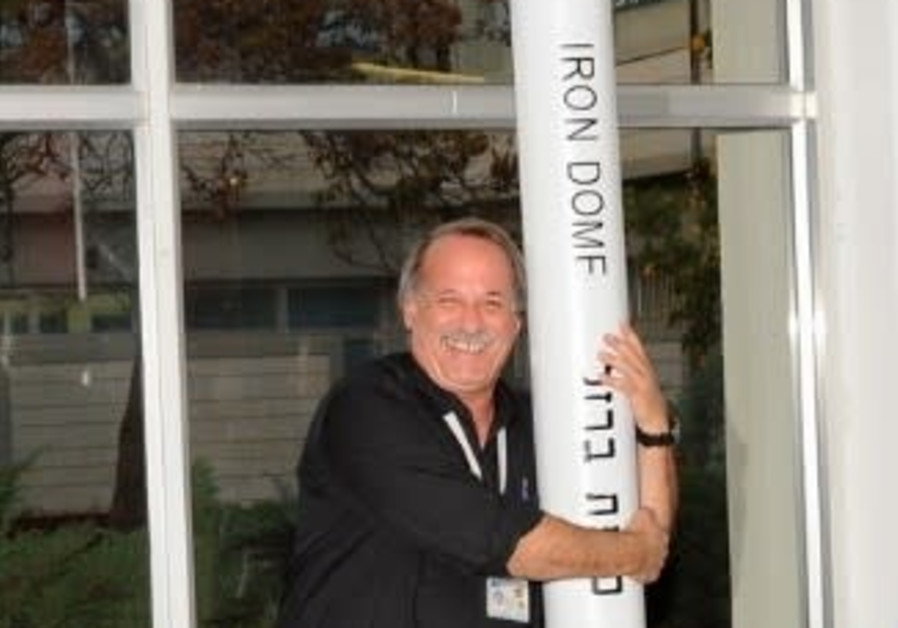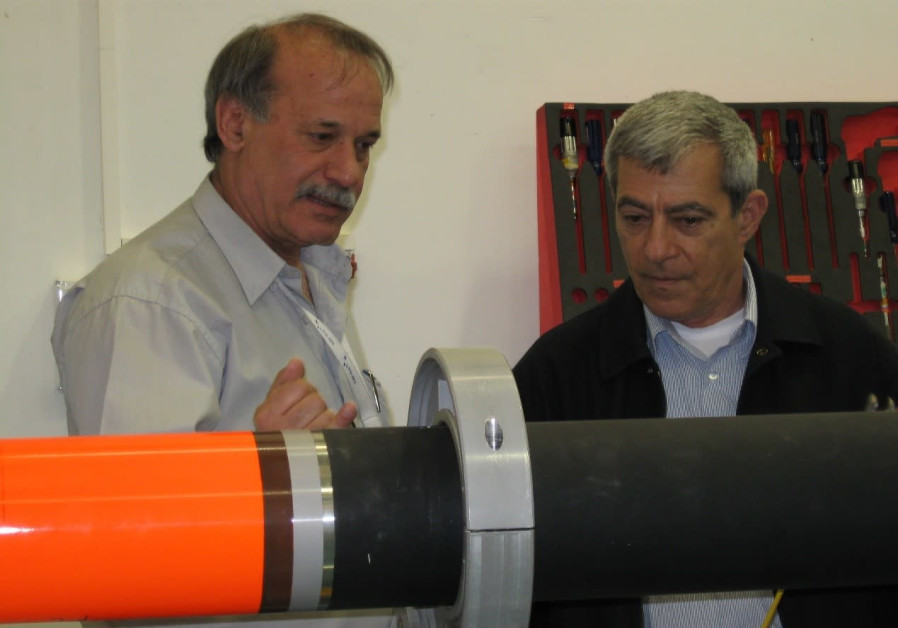Introduction
On June 18 and 19, I participated in a Jerusalem “Shabbaton” sponsored by Fathers and Founders, an NGO. The theme was “Israel as High-Tech Pioneer.” Among the speakers was Chanoch Levin, who headed the Iron Dome Project for Rafael Advanced Defense Systems. What follows is his first-hand account of how, against all the odds, Iron Dome was born and brought to fruition – successfully destroying 95% of the rockets fired at Israeli civilians during the latest Gaza war.
The bare facts
On May 10 at 6 p.m., Hamas and Palestinian Islamic Jihad fired rockets at Jerusalem, after issuing an ultimatum. Residences and a school were hit. Israel responded. By the end of the 11-day war, some 4,360 rockets and mortar shells had been fired from Gaza at southern and central Israel, or about 400 per day.
About 3,400 rockets crossed the Gaza border. Some 680 fell in Gaza [see below] and 280 fell into the sea.
Chanoch Levin
Levin was born in Tel Aviv in 1948, to parents who survived the Shoah and lost all their family. He served in the Paratroopers Brigade and attained the rank of lieutenant-colonel. In 1975 he graduated from Technion, in mechanical engineering, and began employment at Rafael. In 2006, during the Second Lebanon War, four rockets hit the northern Israel village where he and his family lived, and shook his house. As a result he pitched to Rafael’s management a project to intercept and destroy short-range rockets and artillery shells. He was chosen to head the project, which became Iron Dome.
On completing the project, in 2011, he was Rafael’s US representative, and retired from Rafael in 2015. His wife, Dr. Ditza Levin, is an immunologist and visiting scientist at the US Food and Drug Administration. Levin’s start-up has developed a robotic device that automatically resuscitates those whose heart has stopped or who face death for other reasons.
The inside story
Chanoch Levin: “I was head of the Iron Dome project from its inception. In 2006, when I returned from the US where I was an emissary for Rafael, rockets landed in the Jezreel Valley near my home. I told Rafael, I have several possible solutions to the rocket problem. After being appointed to head the project, we gathered a team of engineers to work on it; at the end we had 350 people working on developing Iron Dome. We developed the launcher, the interceptor missiles, the software, infrastructure – and the production line.
“At the end of the project, I was awarded the Israel Defense Prize. I contributed the cash prize to the psychologists who work with inhabitants of the Gaza envelope – the Israeli population bordering and adjacent to Gaza.
“How much time do people have to take shelter, during a red alert, in the Gaza envelope? About 15 seconds. I was in Sderot during several such alarms. It was very unpleasant.
“In 2006, was there a solution to the rockets? No! Not in Israel. Not abroad. If rockets were fired on Israel, the only alternative was to attack the source with ground troops – to invade Gaza.
“What were the difficulties at the start of the Iron Dome project? There was not a single person or group who did not oppose it. The entire defense establishment: chief of staff, the defense minister, many senior officers all claimed it is a fantasy, it cannot be done. A waste of money. I’ll let you in on a secret. At the beginning, I also thought it was impossible. But we had to do it!
“When a Qassam rocket was fired at high speed at Israel, we had to destroy it in the air. My wife said then, this is like hitting a butterfly with a stone.
“Why is it so hard to spot rocket-launchers in Gaza? They are hidden in underbrush, rise to ground level, fire their rockets by remote control – and quickly dive below ground.

“Despite opposition, then-Defense Minister Amir Peretz demanded that the project go forward and he provided the initial funding. After everything was signed, he said to me, tell me, is it possible? Can we do it? And I said, of course! But at that moment, I also did not believe Iron Dome was possible.
“In 2010, NIS 210 million were authorized by the prime minister. I want to stress – Iron Dome was funded only with Israeli money. Not a single dollar of foreign money. And it was right to start this way. We tried very hard not to use foreign sub-assemblies. Everything came from Israeli industry.
“[Then-]Defense Minister [Amir] Peretz demanded that development of Iron Dome be completed in three years! Just for comparison – the previous missile developed at Rafael, completed before Iron Dome, took 15 years. To do it in three years was simply unbelievable. Moreover, the cost of an interceptor missile should be only $50,000. [Author’s note: The cost of a US ground-to-air anti-rocket Patriot missile is $3 million].
“We set up a working group of 350 engineers and technicians – a typical cross-section of the State of Israel. And we worked 20 hours a day, that was clear. In some areas, where there was uncertainty about the design, we set up competing groups. They fought hard to have their ideas accepted. Each time I chose one team’s idea over the others, I avoided the corridor, out of concern for my safety. The competition was fierce.
“We set up the production line for the interceptor missiles long before we even began the project. Usually, you do the opposite. A systems engineer asked me, how do you set up a production line for a missile that has not yet been designed? I said, do it like the production line for the previous missile. We can always modify it. This approach is much like the COVID-19 vaccine. They too set up production before testing was completed.
“In 2008, a delegation of US missile experts led by a leading scientist came to Israel. We presented our project. At the break, she took me aside and said, young man (I was not that young then), you are wasting your time! I said, you know, we Israelis love to be provoked. We love to be told we can’t do something. They gave us a 15% chance of success. They did not believe it would work.
“In 2010, they came back. We had already completed successful tests of Iron Dome. They said, ‘Amazing! Impossible! You must have started this in 1948. It can’t be!’ And they gave us 100 percent probability of success. That number helped us gain, under President Barak Obama, $650 million for the project, from the US. How much did US president Donald Trump, who loved Israel so deeply, invest in Iron Dome? Zero.
“So – what exactly did we develop? Tamir, a Hebrew acronym for til meyaret (interceptor missile). A control-and-command system (computer, software). A superb radar from Elta (Israel Aerospace). A mobile launcher.
“How does Iron Dome work? The system identifies a target. The computer decides whether to intercept it, based on where it is projected to land – open ground or inhabited places. The Iron Dome battery maps the area it defends, and interception is ordered only if the rocket endangers people.
“The system is automatic. The computer sends an interceptor missile against each rocket chosen for destruction. It will seek and destroy only that rocket, no other, and will dodge around others that are not its target.
“For its anti-tank systems, Rafael designed missiles that trailed very little smoke, to prevent the enemy from spotting and targeting those who launched them. But we said, for Iron Dome, we want maximum smoke! We want everyone to see the interceptors seek and destroy incoming rockets.
“Iron Dome is the first missile in the world with a component from Toys ‘R’ Us! We found an electronic component in a robotic toy that was good enough to do the job – and used it.
“How did we build the truck-based mobile launcher? I noticed that in Kibbutz Ramat David, near where I live, they built garbage trucks, with a hydraulic cargo bed that can be raised and lowered. We simply copied it.

“In the May war (Guardian of the Walls), Hamas tried to evade Iron Dome by firing flat-trajectory rockets from Khan Yunis, in southern Gaza, toward Ashkelon. They failed; Iron Dome intercepted them anyway. But 680 of those low-trajectory rockets fell on northern Gaza. Many of the Gaza dead were killed by those rockets – their own rockets.
“At the start of Iron Dome’s development, I appeared before the Knesset Foreign Affairs and Defense Committee. I told them, Iron Dome will defend Israelis and Palestinians. Some Members of Knesset were angry and shouted at me. Why Palestinians? I explained: If rockets hit our cities and kill and wound our citizens, we would have to invade Gaza, with many people killed. With Iron Dome, we will not need to. It will save Palestinian lives. Iron Dome will allow the political decision makers to take decisions without heavy public pressure.
“US Secretary of Defense Leon Panetta came to Israel and said, since Iron Dome was deployed, it has been a game-changer. The US National Defense Industry Association awarded Iron Dome a prize, a medal, the first time such an award was given to a defense project by a foreign country.
“Recently, a survey of Israelis asked, what innovative product is, in your view, most Israeli? Waze: 19%. Disk On Key: 8%. Iron Dome: 29%.
“And to conclude. Former Indian Prime Minister Indira Gandhi once said this, quoting her father Jawaharlal Nehru, India’s first prime minister: ‘There are two kinds of people, those who do the work, and those who take the credit. Belong to the first category, because it is much less crowded!’”
